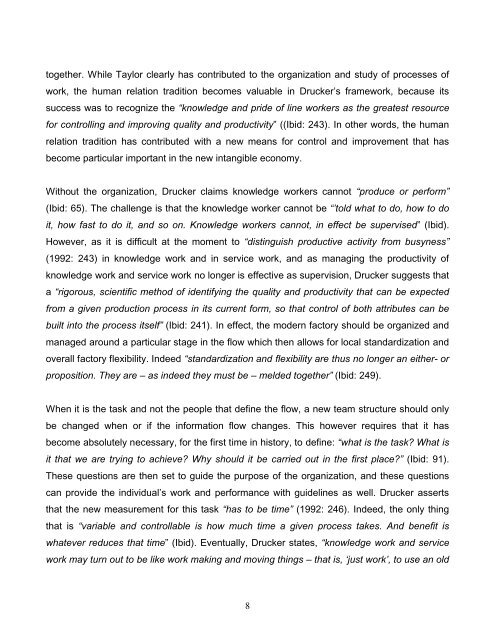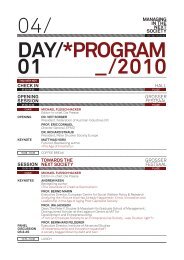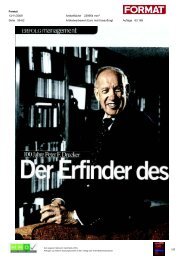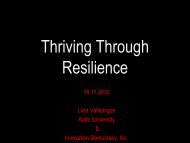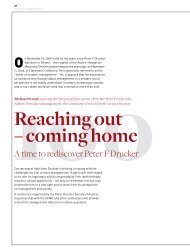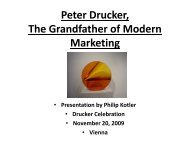From Industrial Capitalism to Taylorian Late Capitalism
From Industrial Capitalism to Taylorian Late Capitalism
From Industrial Capitalism to Taylorian Late Capitalism
Create successful ePaper yourself
Turn your PDF publications into a flip-book with our unique Google optimized e-Paper software.
<strong>to</strong>gether. While Taylor clearly has contributed <strong>to</strong> the organization and study of processes of<br />
work, the human relation tradition becomes valuable in Drucker’s framework, because its<br />
success was <strong>to</strong> recognize the “knowledge and pride of line workers as the greatest resource<br />
for controlling and improving quality and productivity” ((Ibid: 243). In other words, the human<br />
relation tradition has contributed with a new means for control and improvement that has<br />
become particular important in the new intangible economy.<br />
Without the organization, Drucker claims knowledge workers cannot “produce or perform”<br />
(Ibid: 65). The challenge is that the knowledge worker cannot be “’<strong>to</strong>ld what <strong>to</strong> do, how <strong>to</strong> do<br />
it, how fast <strong>to</strong> do it, and so on. Knowledge workers cannot, in effect be supervised” (Ibid).<br />
However, as it is difficult at the moment <strong>to</strong> “distinguish productive activity from busyness”<br />
(1992: 243) in knowledge work and in service work, and as managing the productivity of<br />
knowledge work and service work no longer is effective as supervision, Drucker suggests that<br />
a “rigorous, scientific method of identifying the quality and productivity that can be expected<br />
from a given production process in its current form, so that control of both attributes can be<br />
built in<strong>to</strong> the process itself” (Ibid: 241). In effect, the modern fac<strong>to</strong>ry should be organized and<br />
managed around a particular stage in the flow which then allows for local standardization and<br />
overall fac<strong>to</strong>ry flexibility. Indeed “standardization and flexibility are thus no longer an either- or<br />
proposition. They are – as indeed they must be – melded <strong>to</strong>gether” (Ibid: 249).<br />
When it is the task and not the people that define the flow, a new team structure should only<br />
be changed when or if the information flow changes. This however requires that it has<br />
become absolutely necessary, for the first time in his<strong>to</strong>ry, <strong>to</strong> define: “what is the task? What is<br />
it that we are trying <strong>to</strong> achieve? Why should it be carried out in the first place?” (Ibid: 91).<br />
These questions are then set <strong>to</strong> guide the purpose of the organization, and these questions<br />
can provide the individual’s work and performance with guidelines as well. Drucker asserts<br />
that the new measurement for this task “has <strong>to</strong> be time” (1992: 246). Indeed, the only thing<br />
that is “variable and controllable is how much time a given process takes. And benefit is<br />
whatever reduces that time” (Ibid). Eventually, Drucker states, “knowledge work and service<br />
work may turn out <strong>to</strong> be like work making and moving things – that is, ‘just work’, <strong>to</strong> use an old<br />
8


